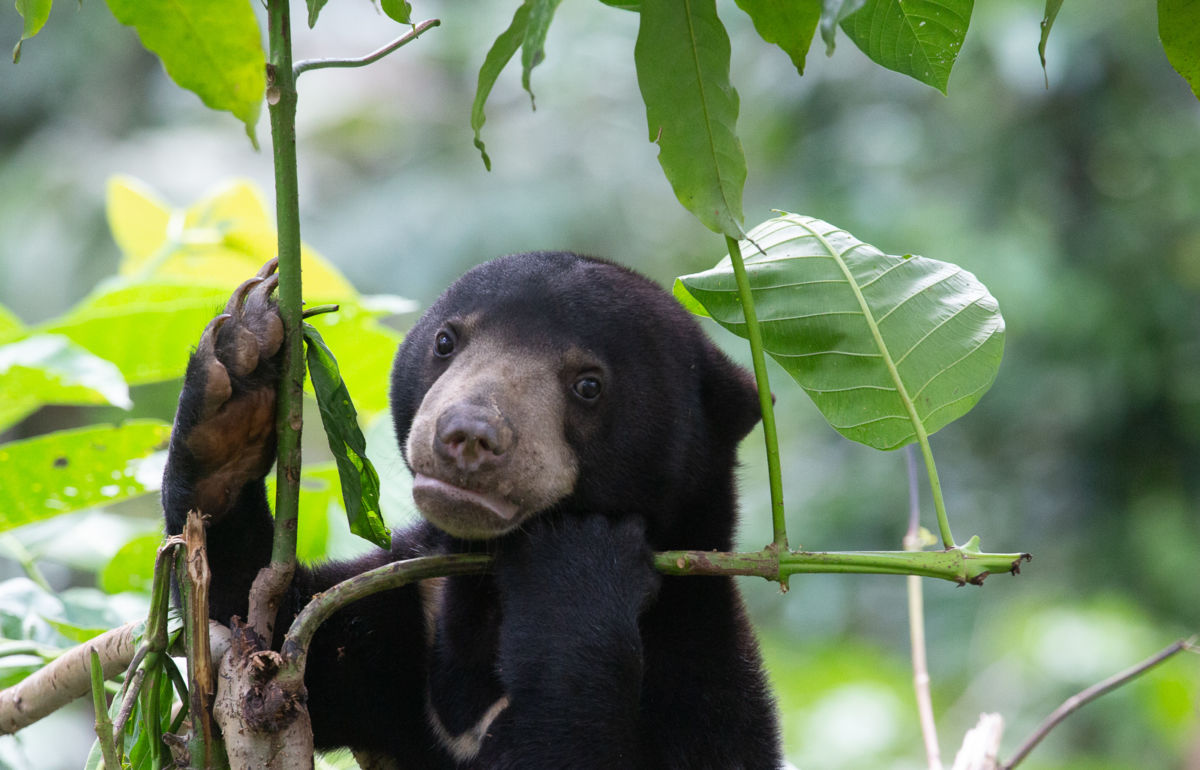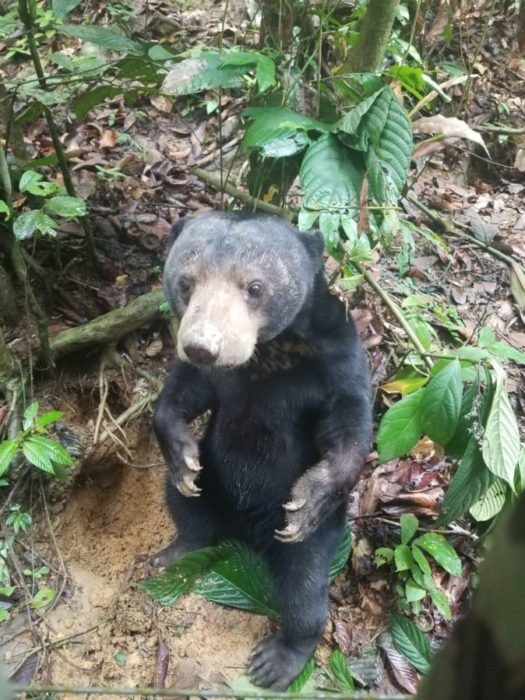
In Sepilok, Malaysian Borneo we had the unique opportunity to get a private tour of the Borneo Sun Bear Conservation Centre (BSBCC) from the founder and director Dr. Wong Siew Te. The BSBCC was only about a 20 minute walk from the Sepilok B and B were our University of San Francisco Tropical Restoration Ecology class stayed for the first few nights. When we arrived at the Sun Bear Conservation Center, we were enthusiastically greeted by Dr. Wong. We were able to view these adorable creatures in a natural rainforest ecosystem from platforms above the forest floor so as not to disturb or interact negatively with the 43 Borneo Sun Bears. They climbed trees to eat young leaves and rooted around in the ground for grubs with their large claws. What a stunning show of bear behavior for our class to watch!
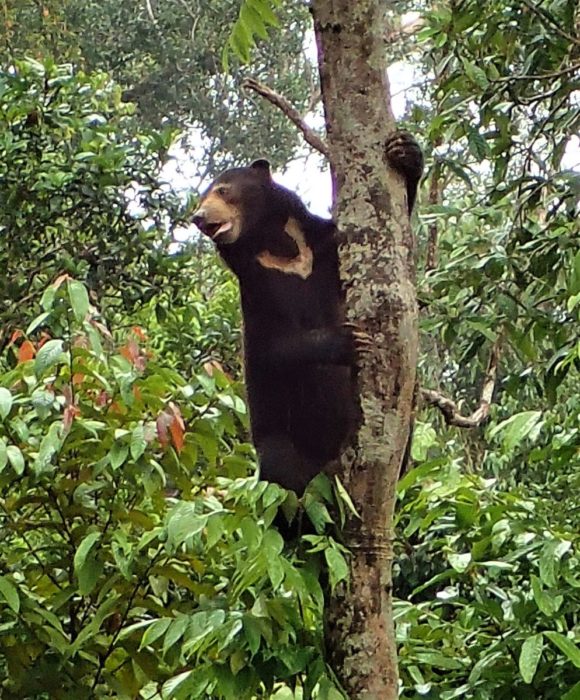
Dr. Wong began by giving a conservation lecture, describing sun bear biology, the threats that they face, and the need for the Borneo Sun Bear Conservation Centre. Sun bears (Helarctos malayanus) are the smallest bears in the world with the longest tongues. All sun bears have moon sliver white splotches under their neck that are unique to each bear. We also learned that the sun bears main diet are figs from ficus trees, unless it’s a mass fruiting year like this year. Mass fruiting or “masting” is when plants (predominantly trees) flower together en masse, producing a large amount of seeds. Masting events only occur every 4-8 years on the Island of Borneo. Outside of masting events and when figs are difficult to find, sun bears are also known to eat small invertebrate such as ants and termites.
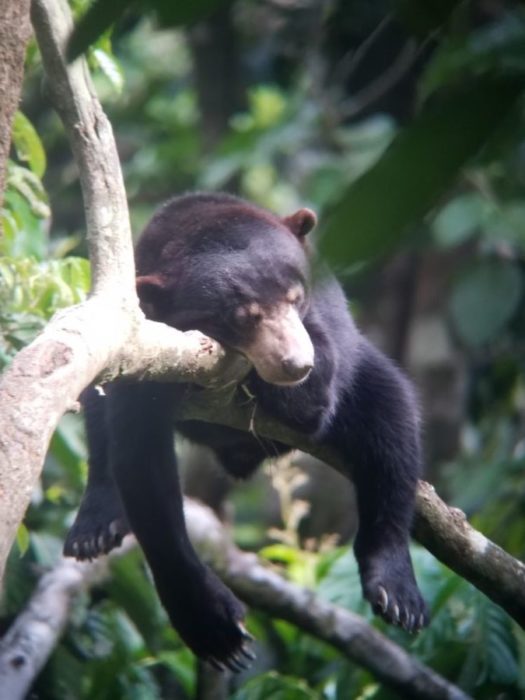
Sun bears are rated as Vulnerable according to the IUCN and are the number two most poached animals in Malaysia, second only to the pangolin. Sun bears are often killed when eating oil palm fruits in palm oil plantations. Sun bears are also often targeted and poached for their gallbladder. Bear bile produced by their gallbadder has been used in traditional Asian medicine for thousands of years. Sun bears are also poached for their claws and teeth to be sold as souvenirs or for decorative jewelry in different cultures. I was very disturbed by all of this, however, Dr. Wong highlighted that visiting the BSBCC and supporting conservation through ecotourism can raise awareness of the threats to sun bears. I hope that by visiting the BSBCC, tourist from around the world will by fall in love with these adorable furry creatures and begin to understand the importance of sun bears to rainforest ecosystems of Borneo and the rest of SE Asia.
By Piper Henthorne
University of San Francisco 2020
Environmental Studies Program
